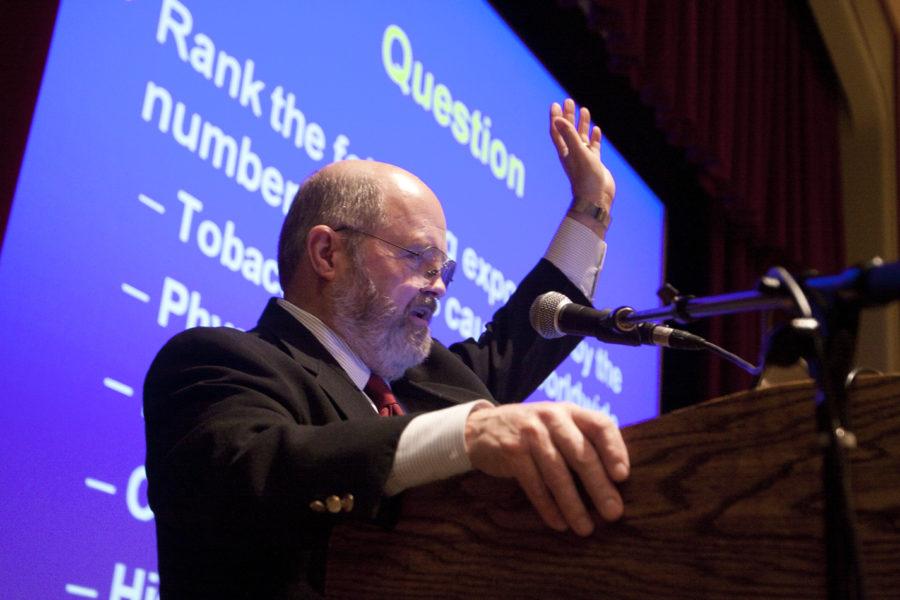Lecturer shares research revealing overweight does not indicate unhealthiness
Photo: Huiling Wu/Iowa State Daily
Steven Blair, coauthor of “Fitness after 50,” speaks Thursday in the Great Hall of the Memorial Union. Blair discussed how diet and exercise affect health.
November 11, 2010
Individuals can be overweight and healthy — at least that’s what Dr. Steven Blair, 2010 Helen LeBaron Hilton Chair in Human Sciences, said Thursday night.
Blair began his lecture with a pop quiz asking the audience to “rank the following exposures by the number of deaths caused worldwide.”
After revealing that the answer included physical activity in the top causes of death, Blair dove into his current research.
“Yes, of course we have an epidemic of obesity — it’s worldwide,” Blair said.
He said he was not trying to convince his audience that there was not an obesity problem, but to show that being overweight is not as big as a health risk as being physically inactive.
“You can be overweight and healthy,” Blair said.
Blair explained that occupational energy expenditure has decreased in the past 40 years. He stated that on average men only expend 140 calories per workday and women only expend 120 calories per workday.
“Light activity jobs have increased. Years ago an employee would have to walk from office to office with papers to be signed or read, now that same employee simply has to e-mail documents,” Blair said. “We should not ignore obesity.”
However, Blair stressed physical activity was the best way to ensure excellent health. He explained that even thin individuals could be unhealthy because of inactivity.
As part of his research Blair looked at the mortality rates of variously weighted men. He found “the participants with large waists (but were physically active) had a one-fifth less chance of dying prematurely compared to their thin, inactive peers,” he said.
“It makes no difference if you gain or lose weight on the mortality rate scale, but an increase or decrease in fitness does affect mortality rates,” Blair said.
Individuals who deceased their physical activity increased their chance for mortality while those who increased their physical activity levels decreased their morality rate.







